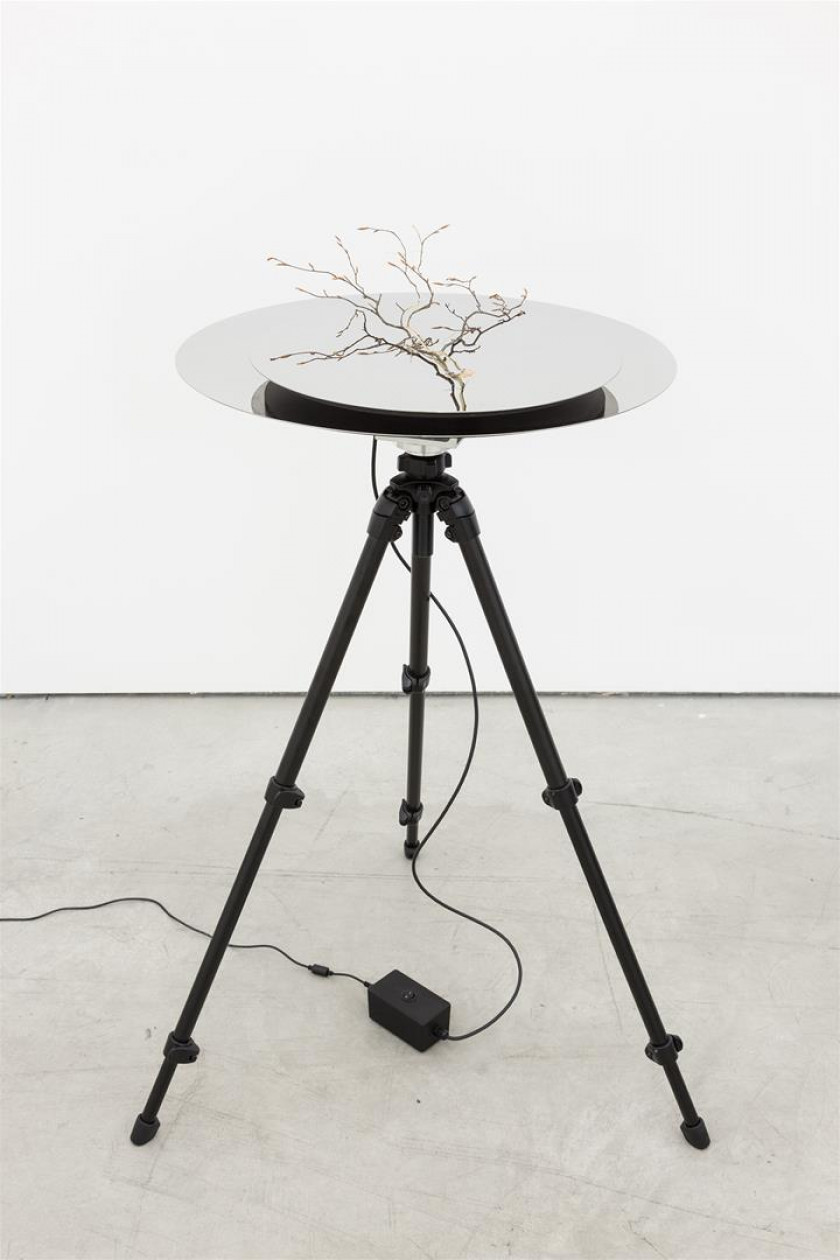Ramita Partita
sculpture


2016
Cut plum tree branch, spinning table with mirror
110 x 80 x 80 cm
The Spanish Brazilian-based artist Daniel Steegmann Mangrané can be regarded as participating in the broad ecology movement. His subtle and delicate pieces, combining elements collected in the natural environment with man-made objects and devices, explore crucial dualities such as earthly nature and technology, sacredness and capitalism, subject and object, inwardness and external reality. With a sense of poetry pervading his work, Steegmann Mangrané spurs the viewers to rethink not only their relationships with the natural world, but also their own positioning within an extended network of sentient living beings, rather than as disconnected observers.
The installation, Ramita Partita, is composed of a plum tree branch laid upon a rotating mirror table placed on a tripod. The organic, ramified and fragile aspect of the branch contrasts with the three bold leading lines of the manufactured tripod, the perfect circular and polished form of the table and mirror and their mechanical rotary motion. The presence of the mirror opens a reflection field in which the viewers can see their own image juxtaposed with the bare, uncovered and vulnerable dead fragment of a tree. The installation may evoke the ancient cabinet of curiosity (Wunderkammer) conceived as a window to the outside world, where collections of stunning and rare naturalia (objects of natural history) and artificialia (man-made objects) were often showcased under glass domes to be contemplated and studied. It may also refer to the cold and impersonal shop displays of fashionable luxury goods. It certainly does play on the fact that nature spontaneously and abundantly creates (ready-made) masterpieces however simple, unadorned and modest they seemingly are. Yet, without respecting them, humans will end up in an artificial world, valuing remnants of a past nature, as if they were archaeological findings.
Working across several media, the artist invites the viewers to place a higher level of attention on the inherent and sophisticated beauty of a delicate small piece of nature, thus cultivating a capacity for wonder and awe.
Katherine Sirois